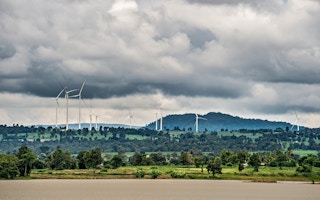Thai renewables developer Wind Energy Holdings Co. Ltd (WEH) has raised US$1.1 billion to finance five new onshore wind farms in what is billed as Southeast Asia’s biggest wind energy project yet.
Located in Thailand’s northeastern provinces of Nakhon Ratchasima and Chaiyaphum, the wind farms will add up to 450 megawatts of energy to the national grid on completion, slated for early 2019.
Towering at a height of 157 metres, the wind farms will boast the tallest towers in the region, and will use the latest technology supplied by Vestas and General Electric. Siam Commercial Bank is financing the project.
The news emerges eight months after Thailand raised its national renewable energy target from 33 per cent to 40 per cent.
Currently, imported energy makes up more than half of Thailand’s energy demands. New, locally-sourced forms of energy are needed to bear the strain of rising power demands and the country’s diminishing oil and natural gas reserves.
Thailand is by far Southeast Asia’s leading nation for solar energy, with 62 per cent of the region’s installed solar capacity in the ‘land of smiles’. But renewable energy will be needed to meet fuel energy demand growth of 80 per cent over the next two decades, according to International Renewable Energy Agency (IRENA) and the Ministry of Energy of Thailand.
Nop Narongdej, chairman of the executive committee of WEH, commented: “While achieving financial close for all five of our projects represents a major milestone for WEH, it also represents a significant milestone for the country, which has shown itself to be a regional leader in the renewables space.”
Wind farms are typically located in remote areas to minimise any disturbance to local communities.
WEH told Eco-Business that the social and environmental impacts of the project had been assessed, and local residents were “strongly” in favour of the project. The company would not disclose any further details and its assessments have not been made public.

















